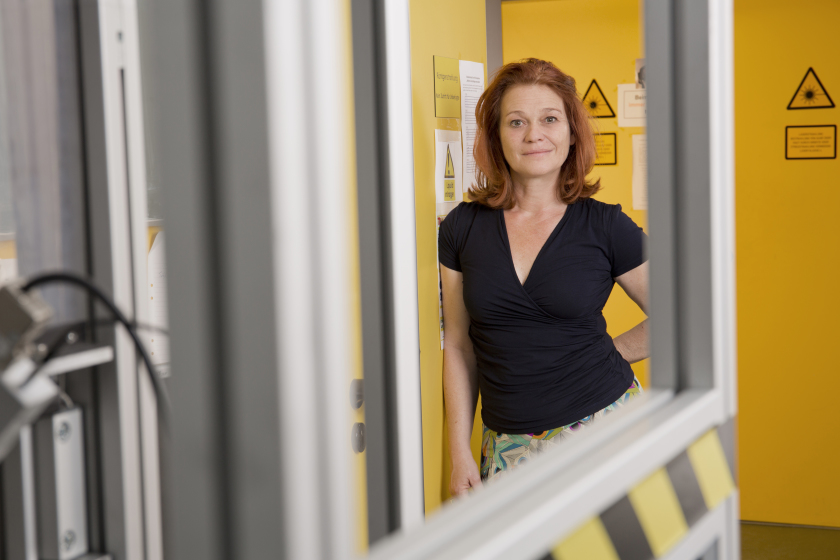HZB and TU Berlin: New joint research group at BESSY II

Prof. Birgit Kanngießer heads a joint research group on X-ray methods, which is funded by TU Berlin and HZB. © Martin Weinhold
Birgit Kanngießer is setting up a joint research group to combine X-ray methods in laboratories and at large-scale facilities. In particular, the physicist wants to investigate how X-ray experiments on smaller laboratory instruments can be optimally complemented with more complex experiments that are only possible at synchrotron sources such as BESSY II.
Prof. Dr. Birgit Kanngießer is professor of analytical X-ray Physics at the Technische Universität Berlin, where she also heads a large research group. Together with the Max Born Institute she has build up BLiX (Berlin laboratory for innovative X-ray technologies), which brings established X-ray methods from the synchrotron into the laboratory. At BESSY II she was involved as one of the first users from the early on.
Now HZB and TU Berlin are funding a joint research group headed by Birgit Kanngießer to strengthen this cooperation. This should also accelerate the exchange of knowledge and technology between BESSY II and university laboratories.
The joint research group is called 'Combined X-ray methods at BLiX and BESSY II - SyncLab'. On the TU Berlin side, the Berlin laboratory for innovative X-ray technologies (BLiX) is integrated. Kanngießer will initially focus on evaluating how time-resolved measurements using near-edge X-ray spectroscopy in the soft X-ray range on smaller instruments and at BESSY II could complement each other. Further analytical and imaging X-ray methods are to follow in the future.
arö
https://www.helmholtz-berlin.de/pubbin/news_seite?nid=22060;sprache=en
- Copy link
-
Green hydrogen: A cage structured material transforms into a performant catalyst
Clathrates are characterised by a complex cage structure that provides space for guest ions too. Now, for the first time, a team has investigated the suitability of clathrates as catalysts for electrolytic hydrogen production with impressive results: the clathrate sample was even more efficient and robust than currently used nickel-based catalysts. They also found a reason for this enhanced performance. Measurements at BESSY II showed that the clathrates undergo structural changes during the catalytic reaction: the three-dimensional cage structure decays into ultra-thin nanosheets that allow maximum contact with active catalytic centres. The study has been published in the journal ‘Angewandte Chemie’.
-
An elegant method for the detection of single spins using photovoltage
Diamonds with certain optically active defects can be used as highly sensitive sensors or qubits for quantum computers, where the quantum information is stored in the electron spin state of these colour centres. However, the spin states have to be read out optically, which is often experimentally complex. Now, a team at HZB has developed an elegant method using a photo voltage to detect the individual and local spin states of these defects. This could lead to a much more compact design of quantum sensors.
-
Solar cells on moon glass for a future base on the moon
Future settlements on the moon will need energy, which could be supplied by photovoltaics. However, launching material into space is expensive – transporting one kilogram to the moon costs one million euros. But there are also resources on the moon that can be used. A research team led by Dr. Felix Lang of the University of Potsdam and Dr. Stefan Linke of the Technical University of Berlin have now produced the required glass from ‘moon dust’ (regolith) and coated it with perovskite. This could save up to 99 percent of the weight needed to produce PV modules on the moon. The team tested the radiation tolerance of the solar cells at the proton accelerator of the HZB.
